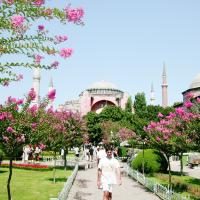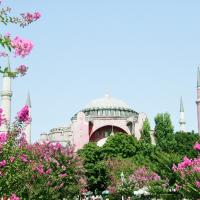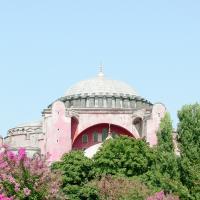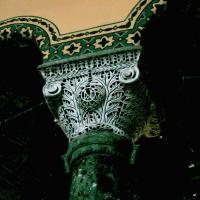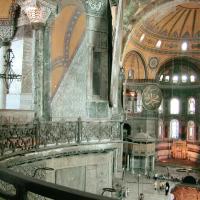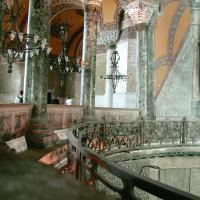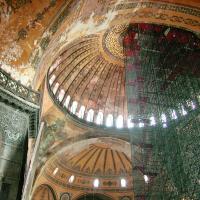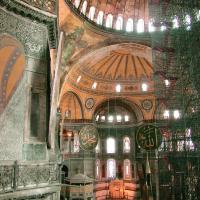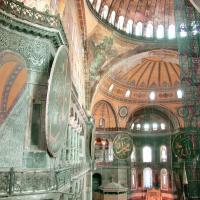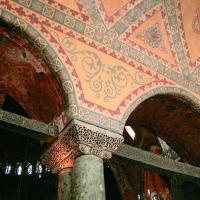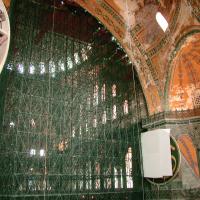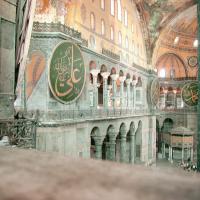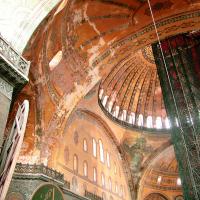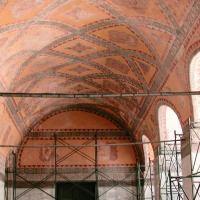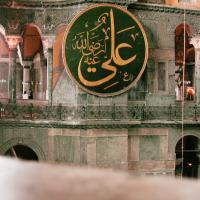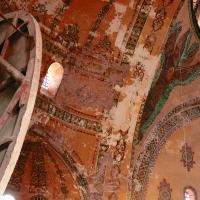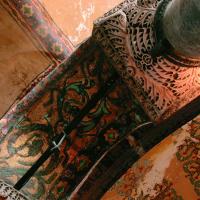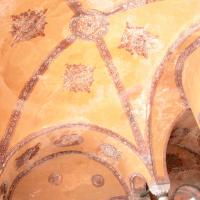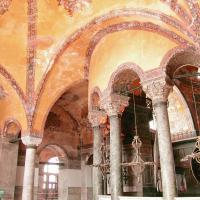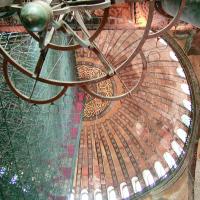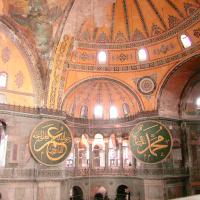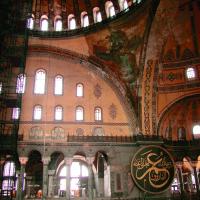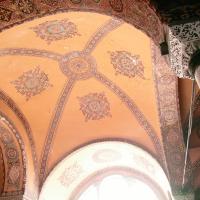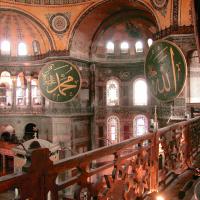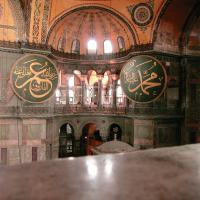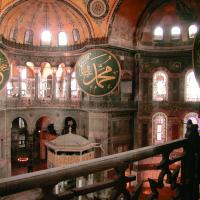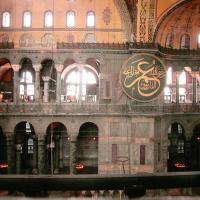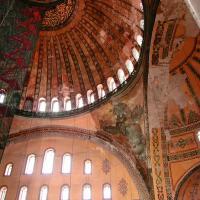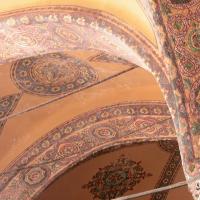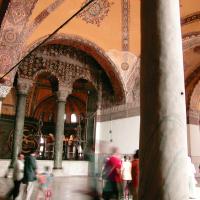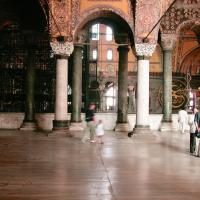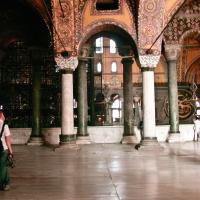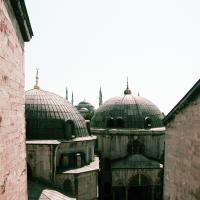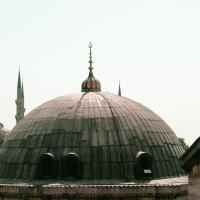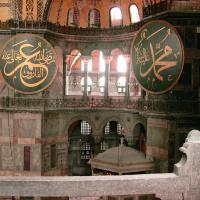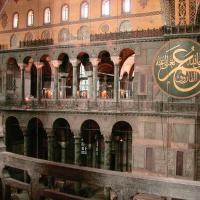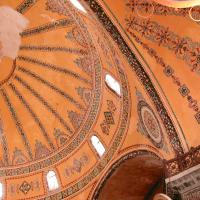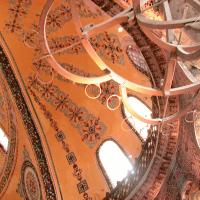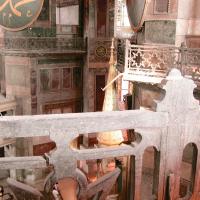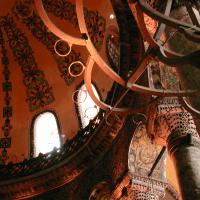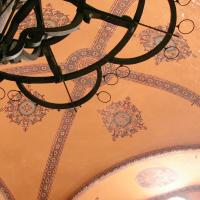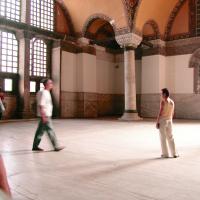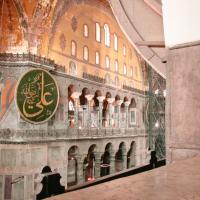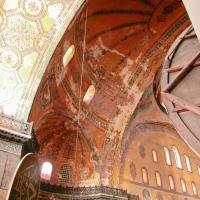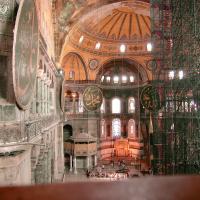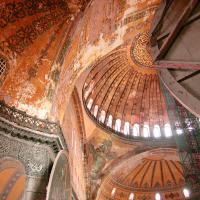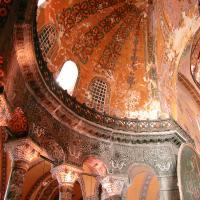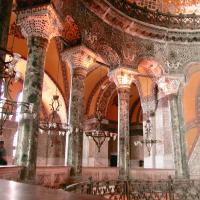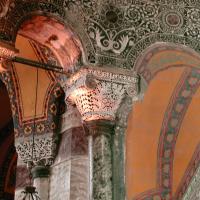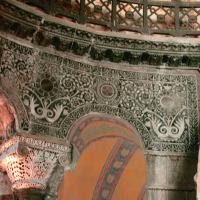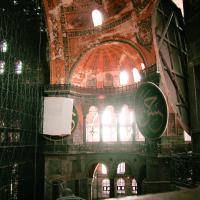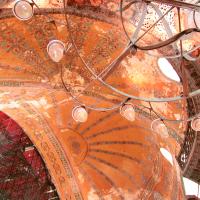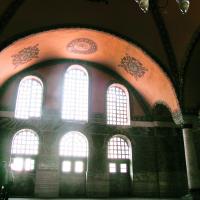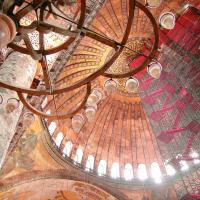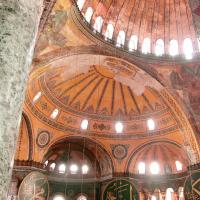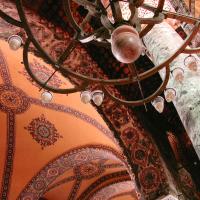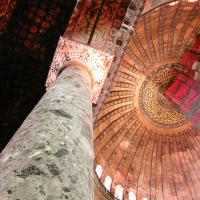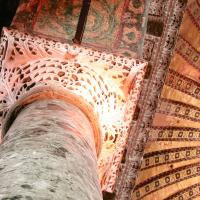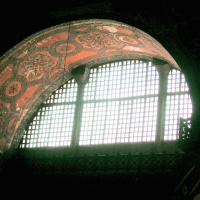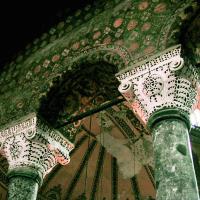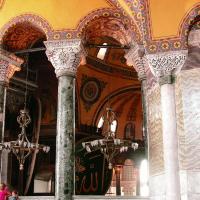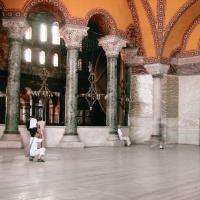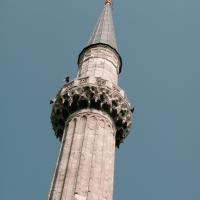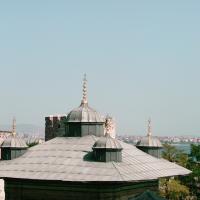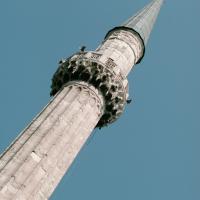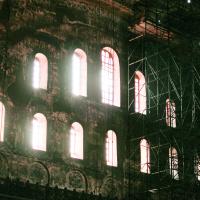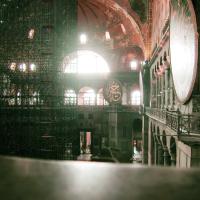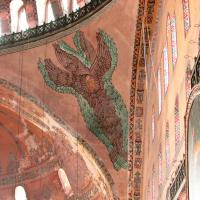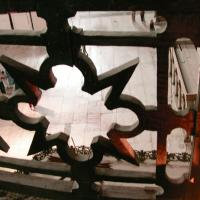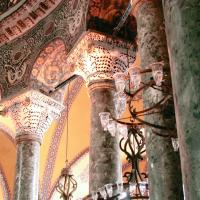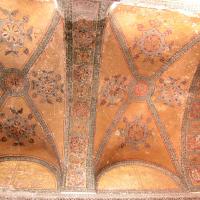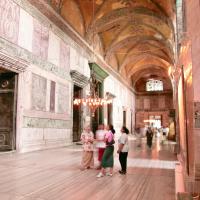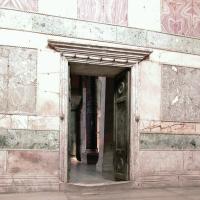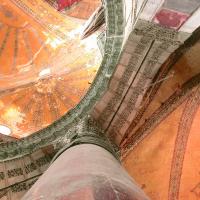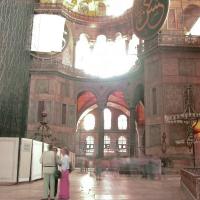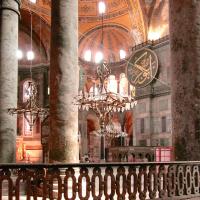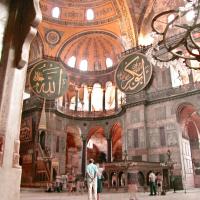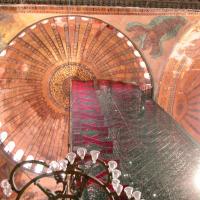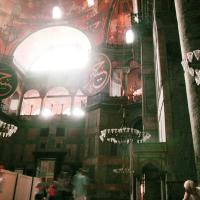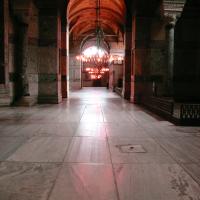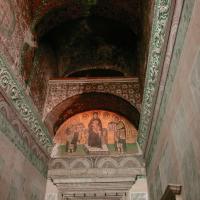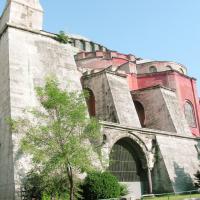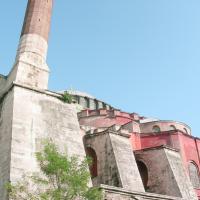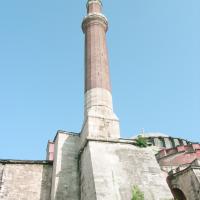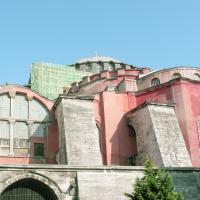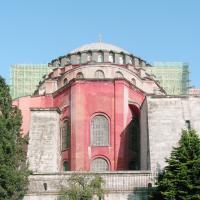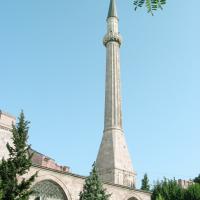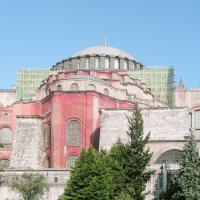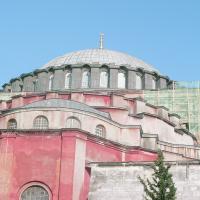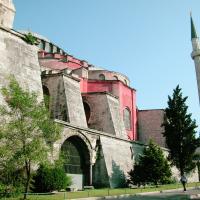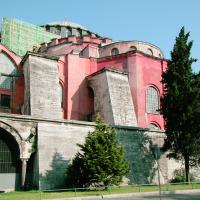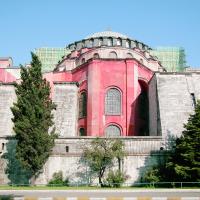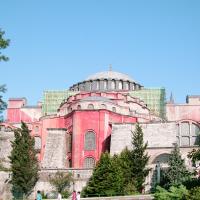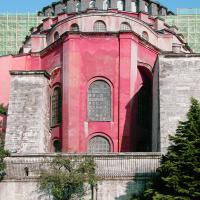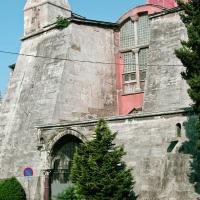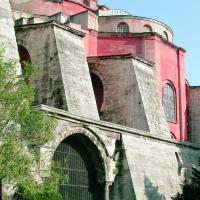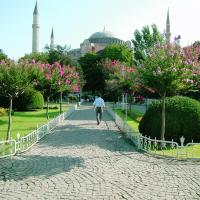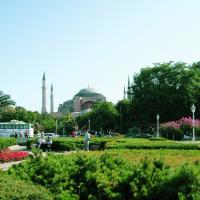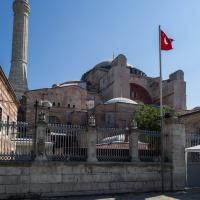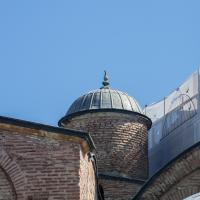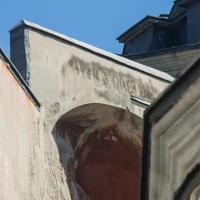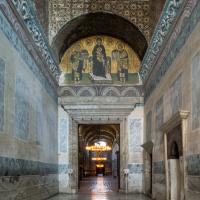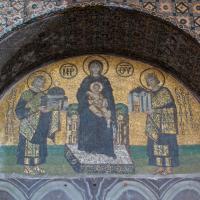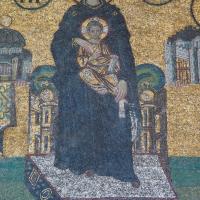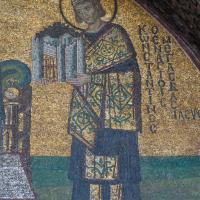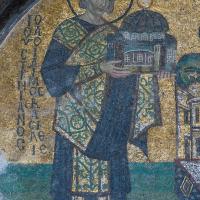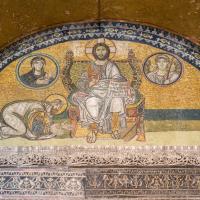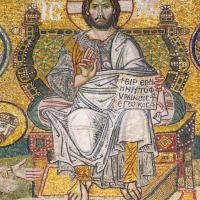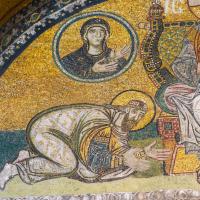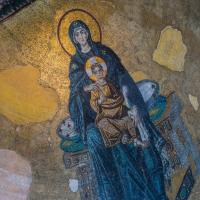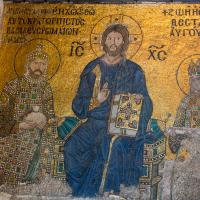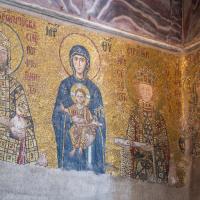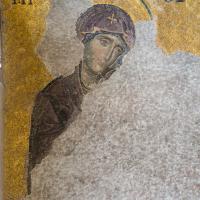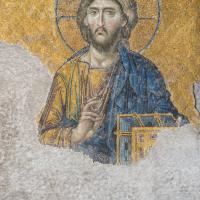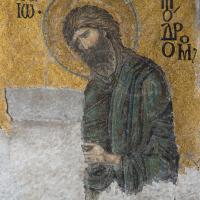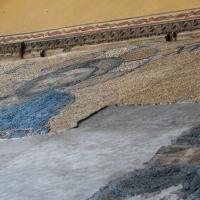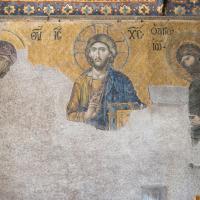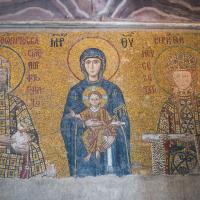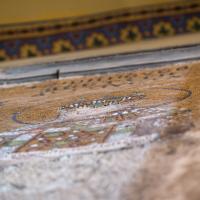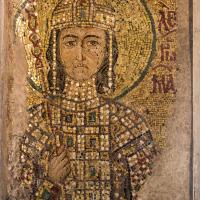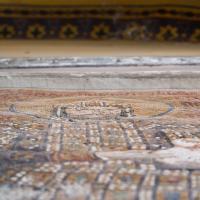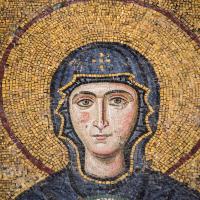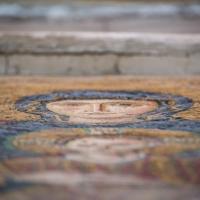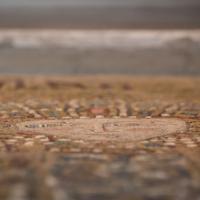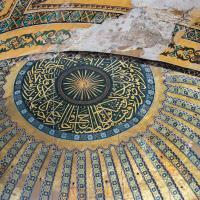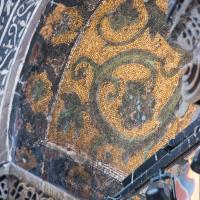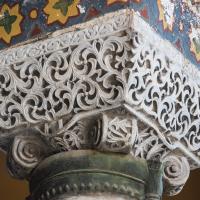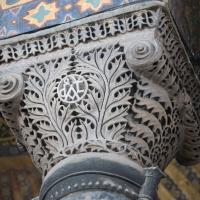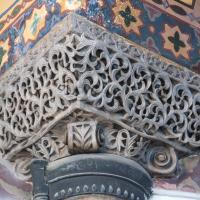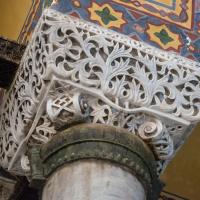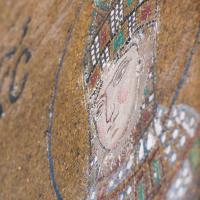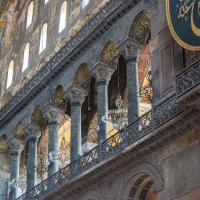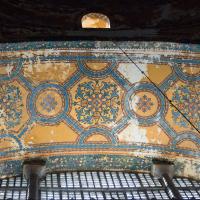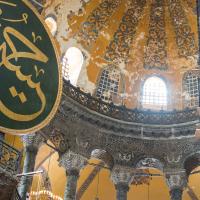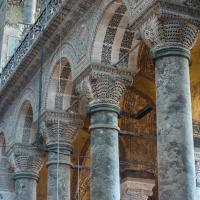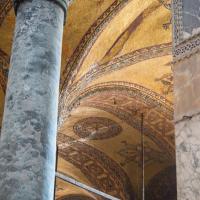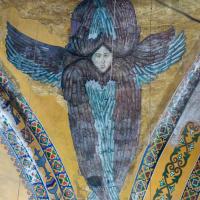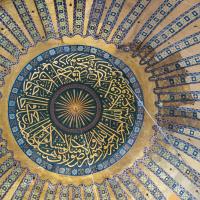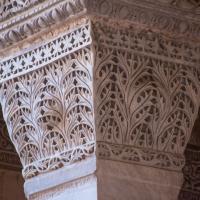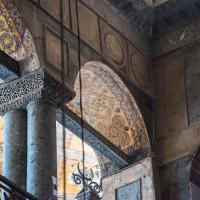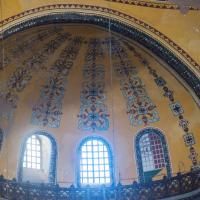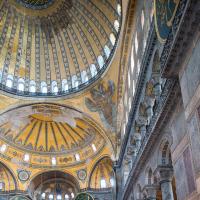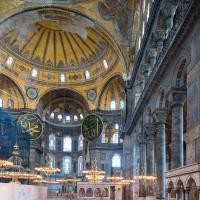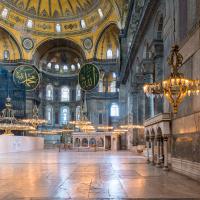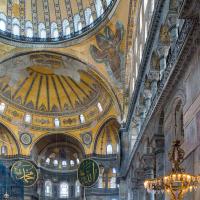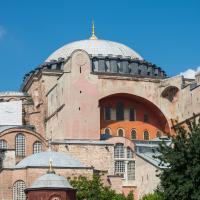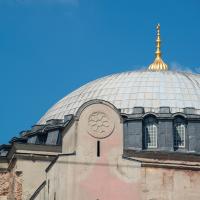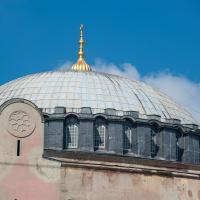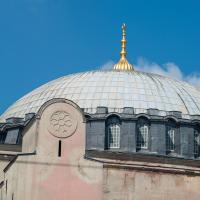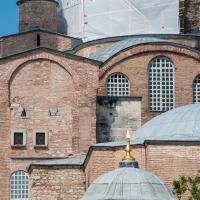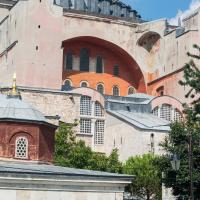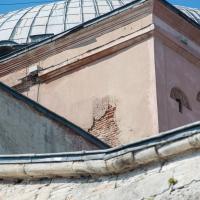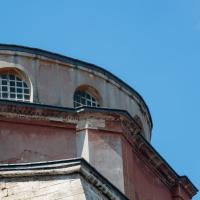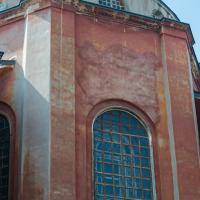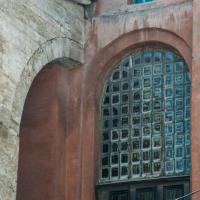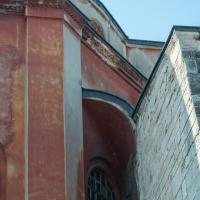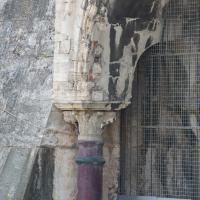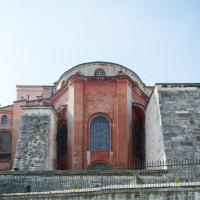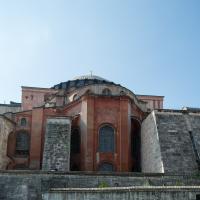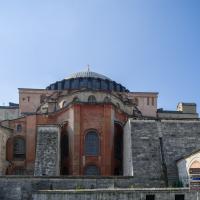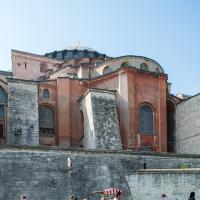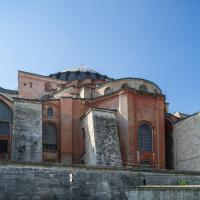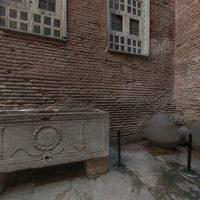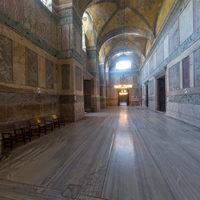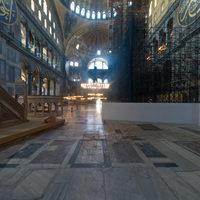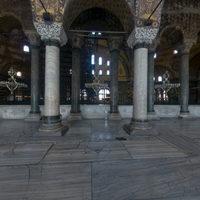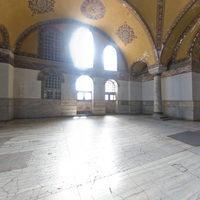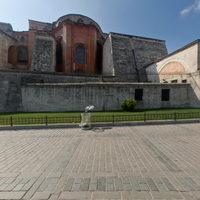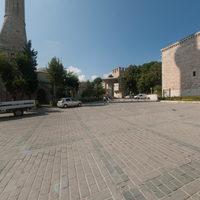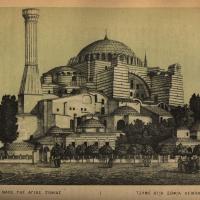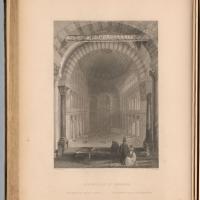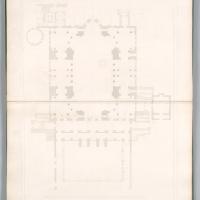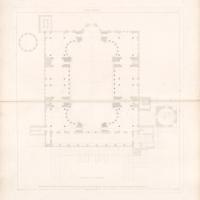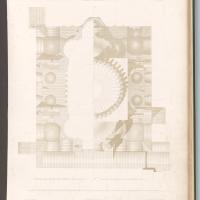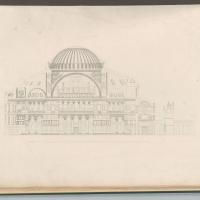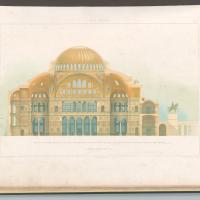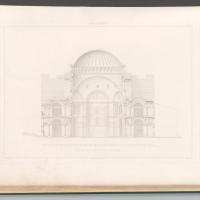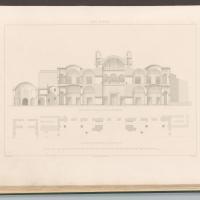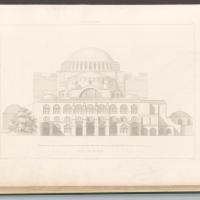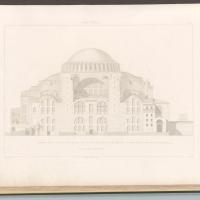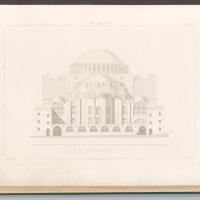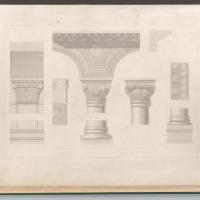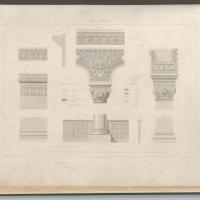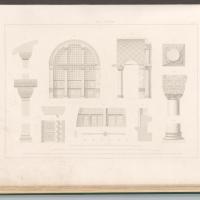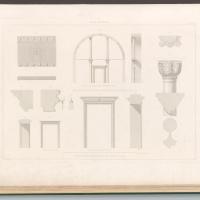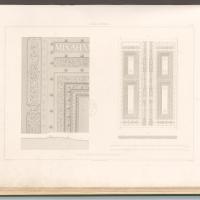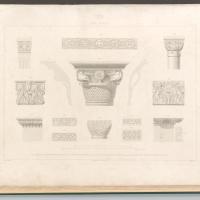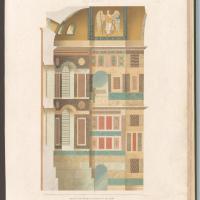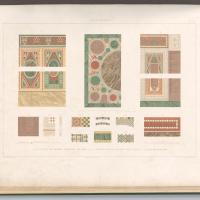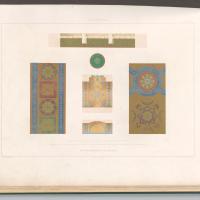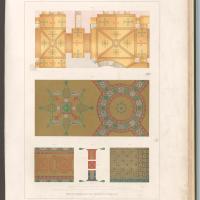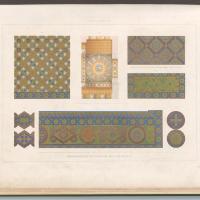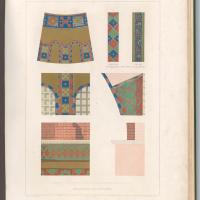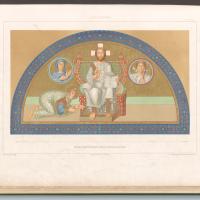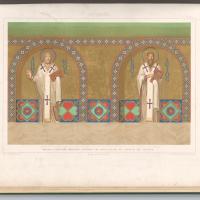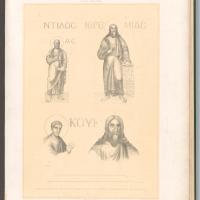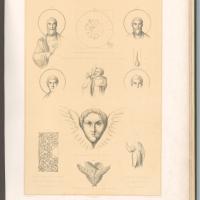Variant Names
Ayasofya Camii, Ayasofya Müzesi
Patron
Emperor Justinian I (527-65)
Date
537 CE
Functions
Church converted into a mosque (now a museum)
Location
Fatih
VR Tour
Map Location
Bibliography
- Abramea, Anna., Oikonomidis, N., “Byzantio, Kratos kai Koinōnia: Mnēmē Niku Oikonomidēs,” in Byzantium, State and Society (Athina, 2003).
- Ackerman, James S., “Leonardo's Eye,” Journal of the Warburg and Courtauld Institutes 1, 1 (1978): 108-46.
- Antoniades, Eugenios M., Ekphrasis tēs Hagias Sophias ētoi meletē synthetikē kaianlytikē hypo epopsin architektonikēn, archailorikēn kai historikēn tu polythrylētu temenus Kōnstantinu polēos, Athenai, 3 vols, (Leipzig, 1907).
- Asutay-Effenberger, Neslihan, “Die justinianische Hagia Sophia: Vorbild oder Vorwand,” in Byzanz - das Römerreich im Mittelalter, (2010): 113-125.
- Barsanti, Claudia, Guiglia Guidobaldi, A., The Sculptures of the Ayasofya Müzesi in Istanbul: a Short Guide (Istanbul, 2010).
- Brubaker, Leslie, “The Visualization of Gift Giving in Byzantium and the Mosaics at Hagia Sophia,” in Wendy Davies and Paul Fouracre, eds., The Languages of Gift in the Early Middle Ages (Cambridge, 2010): 33-61.
- Butler, Lawrence E., The Nave Cornices of Hagia Sophia (Istanbul, 1989).
- Carlsson, F. “Die Ikologie der Hagia Sofia in Istanbul,” Konsthistorisk tidskrift 50 (1981): 5-16.
- Conant, Kenneth J. “The First Dome of St. Sophia and Its Rebuilding,” Bulletin of the Byzantine Institute I (1946): 71-78.
- Cormack, Robin, “Interpreting the Mosaics of S. Sophia at Istanbul,” AHIS Art History, (1981): 131-149.
- Cormack, Robin, Hawkins, J.W. “The Mosaics of S. Sophia at Istanbul: The Rooms above the Southwest Vestibule and Ramp,” DOP 31 (1977): 175-251.
- Dirimtekin, Feridun, “Le skeuophylakion de Sainte-Sophie,” REB 19 (1961): 397-400.
- Dirimtekin, Feridun, “Ayasofya Baptisteri: The Baptistery of Saint Sophia,” Türk Arkeoloji Dergisi 12, (1963): 54-87.
- Dirimtekin, Feridun, “Le local du patriarcat A Sainte Sophie,” IM 13-14 (1963-64), 113-27.
- Hawkins, Ernest J.W., “Further Observations on the Narthex Mosaic in St. Sophia at Istanbul,” DOP 22 (1968): 151-66.
- Ebersolt, Jean, Sainte-Sophie de Constantinople: étude de topographie d'après les cérémonies (Paris, 1910).
- Emerson, Walter and R.L. Van Nice, “Hagia Sophia and the First Minaret Erected after the Conquest of Constantinople,” AJA 54 (1950): 33-40.
- Emerson, W., Van Nice, R.L., “Hagia Sophia: The Construction of the Second Dome and Its Later Repairs,” Archaeology Archaeology 10-1 (1951): 162-171.
- Emerson, W., Van Nice, R.L., “Hagia Sophia: The Collapse of the First Dome,” Archaeology 4, (1951): 94-103.
- Eyice, Semavi, “Ayasofya Horologion'u ve Muvakkithanesi,” Annual Ayasofya Museum 9 (1983) (1984):15-24.
- ---. "The Saint Sophia Horologion and Clock Room,” Annual Ayasofya Museum 9 (1983) (1984) Summaries 5-9. Ayasofya, Vols. 1-2 (Istanbul, 1984).
- Fobelli, Maria L., Un Tempio per Giustiniano: Santa Sofia de Costantinopoli e la Descrizione di Paolo Silenziario, (Roma, 2005).
- Fossati, Gaspare, H., L., Beaumont, Adalbert de, Aya Sofia, Constantinople, as Recently Restored by the Order of H.M. the Sultan Abdul-Medjid., (London, 1852).
- Fossati, Gaspare, Peschlow, Urs, Die Hagia Sophia: nach dem Tafelwerk von 1852 (Dortmund, 1980).
- Fossati, Gaspare, Rilievi storico-artistici sulla architettura bizantina dal IV al XV e fino al XIX secolo, ovvero notizi e intorno alle scoperte fatte in Santa Sofia a Costantinopoli dagli architetti Giuseppe e Gaspare Fossati durante i lavori di restauro al grandioso mon (Milano, 1890).
- Gavrilović, Zaga, Studies in Byzantine and Serbian Medieval Art (London, 2001).
- Grobe, Lars, et al., Byzanz -das Römerreich im Mittelalter (2010).
- Guiglia Guidobaldi, Alessandra and Claudia Barsanti, Santa Sofia di Costantinopoli: l'arredo marmoreo della grande chiesa giustinianea (Vaticano, 2004).
- Gurlitt, Cornelius, Die Baukunst Konstantinopels (Berlin, 1912).
- Hoffmann, Volker, Die Hagia Sophia in Istanbul: Bilder aus sechs Jahrhunderten und Gaspare Fossatis Restaurierung der Jahre 1847-1849 (Bern, 1999).
- Hoffmann, Volker, Staatliche Kunstbibliothek (Berlin, Germany), Der geometrische Entwurf der Hagia Sophia in Istanbul: Bilder einer Ausstellung (Bern; New York, 2005).
- Janin, Raymond, “Le palais patriarchal de Constantinople byzantine,” REB 20 (1962): 131-55
- Janzten, Hans, Hagia Sophia des Kaisers Justinian in Konstantinopel (Köln, 1967).
- Jurasz, Izabela, “Sainte-Sophie de Constantinople dans l''ekphrasis' poétique de Paul le Silentiaire : entre l'histoire et l'idéologie,” Art sacré: Cahiers de rencontre avec le Patrimoine Religieux, (2008): 75-89.
- Kähler, Heinz, Hagia Sophia (New York, 1967).
- Kleinbauer, W. Eugene, Hagia Sophia (London, 2007).
- Koyunlu, Alparslan, “Die Bodenbelage und der Errichtungsort der I.II.III. Hagia Sophia im Lichte einer Ausgrabung,” Ayasofia Müzesi Yıllıgı (Annual of Ayasofya Museum)11 (1990): 147-156.
- Kuniholm, Peter I., and Cecil L. Striker, "Dendrchronological Investigations at St. Sophia in Istanbul: A Preliminary Report,” Annual Ayasofya Museum 10 (1985): 41-45.
- Krautheimer, Richard, Early Christian and Byzantine Architecture (New Haven, CT, 1984).
- Lethaby, William R, Swainson, H., The Church of Sancta Sophia, Constantinople: a Study of Byzantine Building (London; New York, 1894).
- Mainstone, Rowland J., “The First Dome on Justinian's Hagia-Sophia - A comment,” Journal of the Society of Architectural Historians 9-1, (1996): 360-362.
- Mainstone, Rowland J., “The Reconstruction of the Tympana of St. Sophia at Istanbul,” Dumbarton Oaks Papers 23-24 (1969/70): 353+355-368.
- Mainstone, Rowland J., Structure in Architecture: History, Design, and Innovation (Aldershot, Hampshire; Brookfield, VT, 1999).
- Mainstone, Rowland J., “Justinian's Church of St Sophia, Istanbul: Recent Studies of Its Construction and First Partial Reconstruction,” Architectural History, (1969): 39-107.
- Mainstone, Rowland J., Hagia Sophia: Architecture, Structure, and Liturgy of Justinian's Great Church (London, 1988).
- Majeska, George P., “Notes on the Archeology of St. Sophia at Constantinople: The Green Marble Bands on the Floor,” DOP 32 (1978): 299-308.
- Majeska, George P., “Notes on the Skeuophylakion of Saint Sophia,” VV 55 (80)/2 (1998): 212-218.
- Mamboury, Ernest, “Topographie de Sainte-Sophie, le sanctuaire et la solea, le mitatorion, etc.,” Atti del V Congresso di studi bizantini 2. Studi bizantini e neoellenici, 6 (Rome, 1940): 203.
- Mango, Cyril A., Hagia Sophia. A Vision for Empires (Istanbul, 1997).
- Mango, Cyril A., Materials for the Study of the Mosaics of St. Sophia at Istanbul (Washington, 1962).
- Mango, Cyril A., The Oxford History of Byzantium (Oxford; New York, 2002).
- Mango, Cyril A. and Ahmet Ertug, Hagia Sophia: A Vision for Empires (Istanbul, 1997).
- Mango, Cyril A. and Hawkins, E. J. W, “The Apse Mosaics of St. Sophia at Istanbul; Report on Work Carried out in 1964,” Dumbarton Oaks Papers 19 (1965): 113-151.
- Mango, Cyril A. and Hawkins, Ernest J. W, “The Mosaics of St. Sophia at Istanbul: the Church Fathers in the North Tympanum,” Dumbarton Oaks Papers 26 (1972): 1-41.
- Mark, Robert, Cakmak, A. S., Hagia Sophia from the Age of Justinian to the Present (Cambridge; New York, 1992).
- Mathews, Thomas F., The Early Churches of Constantinople (University Park, PA, 1971).
- Meinig, D. W., “The Historical Geography Imperative,” Annals of the Association of American Geographers 3-1, (1989): 79-87.
- Millet, Gabriel, “Sainte-Sophie avant Justinien,” OCP 13 (1947): 597-612.
- Nelson, Robert, Hagia Sophia, 1850-1950: Holy Wisdom Modern Monument (Chicago, 2004).
- Niewöhner, Philippe, Natalia Teteriatnikov, “Architecture and Ornamental Mosaics in the South Vestibule of St. Sophia at Istanbul: The Secret Door of the Patriarchate and the Imperial Entrance to the Great Church,” Dumbarton Oaks Papers 68 (2015): 117-156.
- Oikonomides, Nikos, “Leo VI and the Narthex Mosaic of Saint Sophia,” DOP 30 (1976): 151-72.
- Oikonomides, Nikos “The Mosaic Panel of Constantine IX and Zoe in Saint Sophia,” REB 36 (1978): 219-32.
- Πασπάτης, Αλέξανδρος, Βυζαντιναί μελέται Τοπογραφικαί και ιστορικαί (Κωνσταντινούπολης, 1877): 332-325, 338-343.
- Passadéos, A. “Forme et relations des édifices patriarcaux au Sud de Sainte-Sophie,” Actes du XVe Congrès d'Etudes byzantines. Athènes - Sept. 1976. 2. Art et archéologie Communications. (Athens, 1981): 623-630.
- Pentcheva, B. V., "Hagia Sophia and Multisensory Aesthetics,” Gesta 50.2, (2011): 93-111.
- Restle, M. "Neuere Wege zum Verständnis der Hagia Sophia in Istanbul,” Pantheon 39 (1981): 156-160.
- Salzenburg, W. Altchristliche Baudenkmale von Constantinopel vov V bis XII Jahrhundert (Berlin, 1854).
- Scheja, G. "Hagia Sophia und Templum Salamonis,” Istanbuler Mitteilungen 12 (1962): 44-58.
- Schneider, Alfons M., Die Grabung im Westhof der Sophienkirche zu Istanbul, Istanbuler Forschungen 8 (Berlin, 1936).
- Schneider, Alfons M., “Die vorjustinianische Sophienkirche,” Byzantinische Zeitschrift 36 (1936): 77-85.
- Schneider, Alfons M., Die Hagia Sophia zu Konstantinopel (Berlin, 1939).
- Schneider, Alfons M., Sophienkirche und Sultansmoschee (Munchen, 1951).
- Sheppard, Carl D., “A Radiocarbon Date for the Wooden Tie Beams in the West Gallery of St. Sophia, Istanbul,” BOP 19 (1965): 237-40.
- Smith, Christine, “Cyriacus of Ancona's Seven Drawings of Hagia Sophia,” The Art Bull 69 (1987): 16-32.
- Stichel, Rudolf H. W., “Die Hagia Sophia Justinians, ihre liturgische Einrichtung und der zeremonielle Auftritt des frühbyzantinischen Kaisers,” in Byzans-das Römerreich im Mittelalter, Teil 2,1 Schauplätze, ed. Falko Daim and Jörg Drauschke (Mainz, 2010): 25-57.
- Strube, Christine, Die westliche Eingangssite der Kirchen von Konstantinopel in justinianischer Zeit (Weisbaden, 1973): 13-105.
- Strube, Christine, Polyeuktoskirche und Hagia Sophia. Umbildung und Auflösung antiker Formen, Entstehung des Kämpferkapitells (Munchen, 1984).
- Swift, Emerson H., “The Latins at Hagia Sophia,” AJA 39 (1935): 458-74.
- Taylor, Rabun, “A Literary and Structural Analysis of the First Dome on Justinian's Hagia Sophia, Constantinople,” Journal of the Society of Architectural Historians.55.1, (1996), 66-78.
- Teteriatnikov, Natalia, Mosaics of Hagia Sophia, Istanbul: the Fossati Restoration and the Work of the Byzantine Institute (Washington, DC, 1998).
- Teteriatnikov, Natalia, “Hagia Sophia: The Two Portraits of the Emperors with Moneybags as a Functional Setting,” in: Arte Medievale 10/1 (1996): 47-67.
- Türkoglu, Sabahattin. “Ayasofya Hazine Dairesi (Skevophilkion) Kazısı,” (Excavations in the Skeuophylakion of H. Sophia). 3. Kazı Sonuçları Toplantısı. (Ankara, 1981): 99-101.
- Van Millingen, Alexander, Traquair, R., George, W. S., Henderson, A. E, Byzantine Churches in Constantinople: Their History and Architecture (London, 1912).
- Van Nice, Robert L., Saint Sophia in Istanbul; an Architectural Survey (Washington, D.C., 1965).
- Van Nice, Robert L., St. Sophia's Structure: a New Assessment of the Half-domes (New York, 1964).
- Whittemore, Thomas. The Mosaics of St. Sophia at Istanbul Preliminary Reports (Oxford, 1933, 1936, 1942, 1952).
- Underwood, Paula A., “Notes on the Work of the Byzantine Institute in Istanbul: 1954,” DOP 9-10 (1956): 291-94.
- Underwood Paula A. and E.J.W. Hawkins, “The Portrait of the Emperor Alexander,” DOP 15 (1961): 187-217.
- Xydis, S.G. “The Chancel Barrier, Solea, and Ambo of Hagia Sophia,” AB 29 (1947): 1-24.
Content Manager
Ayse Ercan, Georgios Makris

